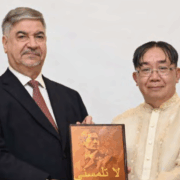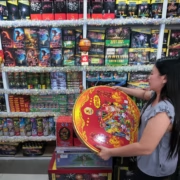The invisible receipt

On Thursday, I earned the right to write this, not by ambition, but by accident. I lost something ridiculously small: a parking ticket.
At Robinsons Fuente, third floor, after a delicate maneuver into a slot narrower than my patience, I was sure I slipped that thin strip of paper receipt into my wallet. Then, poof. Gone. Maybe it fell out when I paid with my ATM card. Maybe it evaporated like government promises.
I searched every pocket for a miracle, and found grocery and fast-food receipts worth ₱5,000, but not the one slip that mattered.
With the ticket, the parking fee was ₱20. Without it, the penalty was ₱200 plus the ₱20, plus paperwork: a form, my driver’s license, my vehicle OR/CR, requirements worthy of a passport application, just to exit a mall parking lot.
I paid. No argument. My fault, after all. The cashier wasn’t the villain; the system was. Without rigid auditing, she’d be the one liable.
But here’s the bigger picture: in this country, nothing is ever “just a ticket.” Every stub, every slip, every so-called “terminal fee” is part of a larger leakage. Small, yes. But multiplied? A flood.
The ₱20 racket
In Cebu, mall parking is outsourced to contractors armed with mobile POS machines. Even city government attendants now issue neatly printed receipts. Yet sometimes, a ₱20 bill with a wink means: “no print, just keep it.” A shortcut, or the tiniest crack in the dam?
On toll roads like CCLEX, at least the system pretends to work: ₱98 for cars, cash or cashless, receipts printed and official. But drive north to Hagnaya Port in San Remegio, as I do twice a month en route to Bantayan District Hospital, a 4-hour travel time and 140 kilometers away from home, and the illusion of order collapses. I shoulder the fares and fees out of pocket, not my employer’s, for the sake of convenience. Pricey, yes, but the alternative is surrendering to chaos.
At the wharf, you pay the official Cebu Port Authority (CPA) a fee of ₱168, printed on a proper ticket, plus ₱2,100 for the Bill of Lading. Then another hand appears: “Terminal Fee for Vehicles, ₱30.” Receipt? A flimsy green slip, sometimes nothing at all.
Passenger terminal fees are ₱25, officially stamped by the CPA. Yet the CPA seems unbothered when barangays and municipalities impose their own “terminal fees,” printed on receipts so crude they look like Microsoft Paint experiments. Honestly, my kid could pass one off as a school art project.
Seven years as a suki means I know their faces. They rotate yearly, usually seniors deputized for the “collection.” Sometimes they waive it when I flash my Cebu Province employee ID and say, “I’m a government physician, I’m not here for leisure, I’m here for work.” Sometimes it doesn’t work. The excuse: “Your vehicle is not a Red Plate.” Translation: pay up anyway.
Once, I challenged them: Let’s talk to your barangay captain then. But I was already late for duty. The hospital would wait for no argument. He backed off. If it were truly mandatory, security would have stopped me. They didn’t. Because, in truth, it isn’t.
Arriving at Santa Fe Port, and before you even exit the port, another set of collectors waits. They call it a “Toll Fee” or “Terminal Fee for Exiting.” Different uniforms, same appetite. One barangay, one municipality, both nibbling from the same traveler.
Now multiply that nibbling: 18 trips daily per port, hundreds of vehicles, thousands of passengers. With no mobile POS, no central ledger, no transparency, where do those pesos go? Into coffers, or pockets pooled like loose change in a crony’s drawer?
The flood we don’t see
We rage at billion-peso scandals. But it’s the droplets, the unprinted receipts, the “lost ticket” penalties, the ₱20 shortcuts, that quietly flood the system with corruption.
If even sari-sari lotto outlets can issue proper receipts nationwide, why can’t barangay or municipal collectors? Are they allergic to accountability, or simply addicted to leakage?
Flood-control projects make headlines. But what about flood control for corruption? Who plugs the leaks that drown us in petty dishonesty?
There’s an old tale: a boy plugged a dike’s leak with his finger. But no one can hold the hole forever. When he fell asleep, the dike collapsed.
So who was at fault, the boy, or the society that left him alone?
Our ₱20s are that leak. Small enough to ignore, big enough to drown us if left unchecked. One coin won’t save the system. But many one-peso coins, properly counted, might.
The flood won’t be stopped by billion-peso budgets. It begins, or ends, with the invisible receipt in your pocket.
——
Melben Jochico, MD, is a physician and satirical essayist based in Cebu. He writes about medicine, governance, and everyday corruption through lived experiences.

















